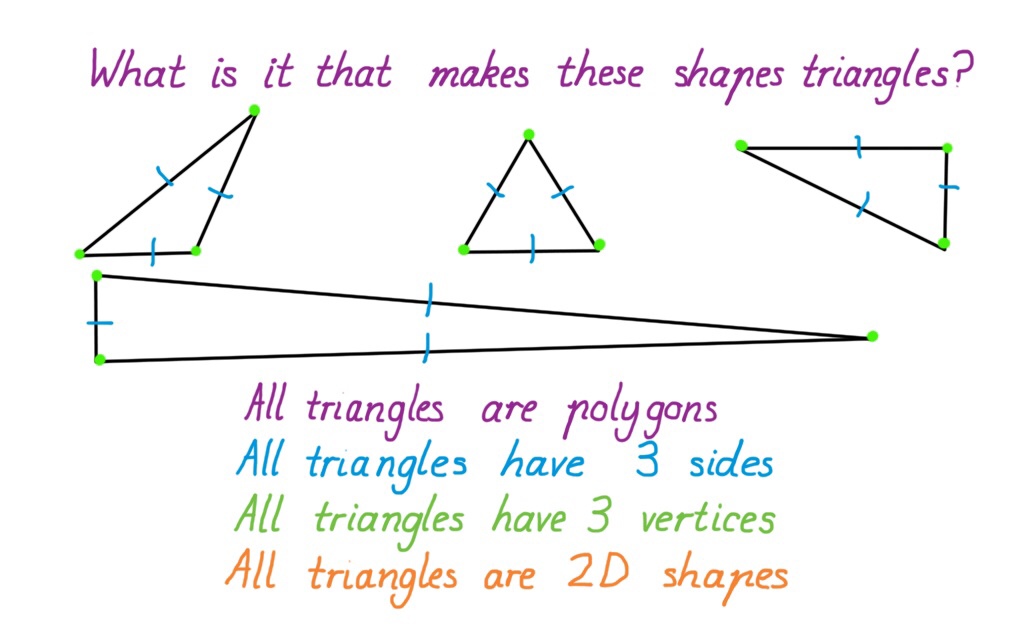This week we've been having lots of fun inquiring into 2D shapes.
Our goals have been:
Understand:
The language and feature of different shapes.
Know:
The name and features of different 2d shapes.
Be able to do:
Explore geometric features and describe shapes using vocabulary such as 'sides', 'corners', 'edges' and 'faces'.
Through their investigations the clever students came up with the following attributes for polygons
– A polygon must have at least 3 sides;
– A polygon must have straight lines;
– A polygon is a 2D shape;
– A Polygon must be a closed shape;
– A Polygon must have sharp corners;
I was really impressed with the last attribute as it showed me the students were aware of angles and ready to start learning about them conceptually.
From here we moved onto triangles. The students were provoked into exploring what defined a triangle by looking at three pictures of different triangles.
– A triangle has 3 sides;
– A triangle is a polygon;
– A triangle has 3 vertices; (they called them corners to start with, but this group of kids devour vocabulary, so I thought it only fair to teach them the correct terminology.)
– A triangle is a 2d shape.
The kids were then given the opportunity to play with a really cool geoboard app on their iPads to create as many different patterns they could using only triangles.
The students are really creative, so we ended up having lots of really interesting triangle inspired pictures.
The following day, we looked at rectangles. Again I provoked their thinking by showing 3 different shaped rectangles, and asked them what features make them all rectangles.
This was their first attempt at defining a rectangle:
– A rectangle has 4 vertices (they jumped straight in with this one, I knew I was right to teach them the correct words);
– A rectangle has 4 straight sides;
– the opposite sides of a rectangle are the same length;
– A rectangle is a 2D shape;
– A rectangle is a polygon.
Pretty good for 6 and 7 year olds, right?
I then drew a rhombus and told them it wasn't a rectangle and we looked at the attributes they had just listed. We determined that it fulfilled all the attributes of a rectangle that they had just come up with.
So why isn't a rhombus a rectangle?
– A rectangle has 4 right angles.
Phew! Amazing work.
Again the kids created some amazing rectangle inspired art on their geoboards.
Always wanting to find real world connections to what we are learning, I took the opportunity to explore triangles and rectangles in the scholastic book club brochures that were going home last night.
The students have been using a really cool app called PicCollage to collate and display information recently. I challenged them to locate as many rectangles and triangles in their scholastic brochure as possible, and create a collage for me in PicCollage.
These kids being the way they are, ignored the abundance of rectangles on every page, and challenged themselves to find those elusive triangles.
Needless to say they were all very successful.
Tomorrow, squares.



